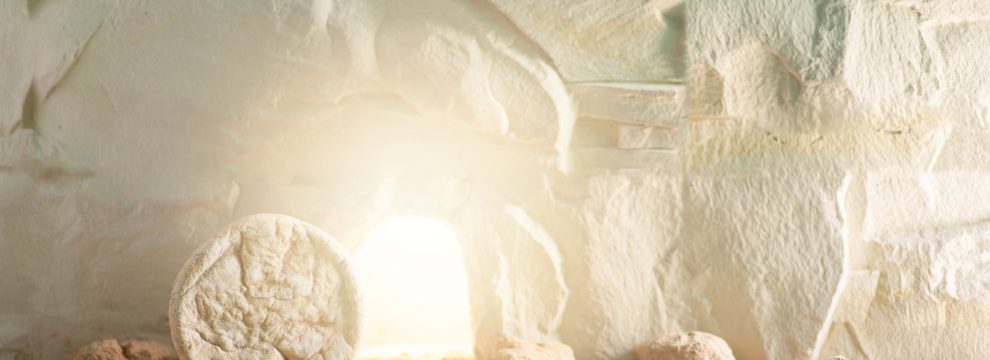Three resurrection accounts set the spiritual ball in motion.
© desireofmysoul.faith & SoulBreaths.com. All rights reserved.
READING TIME: 4 MINUTES.
HAVE YOU READ THE FIRST POST IN THIS SERIES?
What God Revealed
The first three resurrection accounts are in the Hebrew Bible (Tanakh)—and are followed by seven more accounts in the New Testament (B’rit Chadashah).
They’re all bridge-crossing events of epic proportions, regardless of what part of the bridge you’re on . . . Judaic, Messianic Judaic, or Christian.
Each time, God peels back a piece of the spiritual dimension so we can evidence His power and catch a glimpse of the resurrection promise to come. Yep, resurrection is real, and it’s the main event up ahead.
#1. GENTILE WIDOW OF TZARFAT’S SON
[1 Kings 17:10-24]
Opening scene: Meager, drought-riddled times. The place was Tzarfat [Zarephath]—a Phoenician city between Sidon and Tyre in Lebanon.
The great prophet Elijah [Eliyahu] stood at the city gate where he saw a gentile widow gathering sticks. Perhaps hesitantly, he asked for a little cup of water, then later, for some bread. But she only had enough flour and oil to make a last meal for her son and herself before they starved to death.
Elijah instructed her not to fear but to bake him the bread—and then bake more for her and her son. The widow’s obedience was honored. The flour and oil never ran out during the drought. Then time passed and the widow’s son became ill. Increasingly ill. The boy stopped breathing and died. The favor of the Lord seemed to have vanished from the widow’s house.
Elijah took the dead boy from the mother’s lap, carried him upstairs to the prophet’s upper room, and laid the boy on the bed. Crying out to the Lord, questioning why this misery was put upon the widow, the prophet Elijah made a faith move.
He stretched himself out on the child three times and pleaded for Adonai to allow the child’s soul to be returned to the body.
God’s compassion prevailed. Elijah carried the now-resurrected child back to his mother and said, “See? Your son is alive.”
* * *
#2. JEWISH SHUNAMMITE’S SON
[2 Kings 4:20-37]
Opening scene: The village of Shunem, north of Jezreel in the Tribe of Issachar’s land.
Elisha was a disciple and prophet-successor of the great prophet Elijah [Eliyahu]—as well as a frequent guest of a Jewish Shunammite, a woman of means and rank who prepared an upper room for his visits.
Rabbinic teachings speak highly of her hospitality, saying we all should bring a Torah scholar under our roofs, giving them nourishment and allowing them to partake of all that we possess. [Perek Zedakot 1]
To honor the Shunammite woman’s kindness, the Lord told Elisha that the childless woman would bear a son, even though her husband was old.
A year later, she indeed gave birth to a son. But when the child was a bit older, he died.
A woman of resolute, bold faith, she laid her dead child on the prophet’s bed in the upper room, shut the door, and went out. She asked her husband to send her a servant and a donkey so she could leave immediately to see the prophet Elisha.
Elisha wasted no time. He gave his staff to his servant Geichazi, ordering him to dress for action and go ahead to the woman’s house—but warned him not to stop or answer anyone and to lay his staff on the child’s face.
The servant obeyed, but the child didn’t stir. No sound, no sign of life. Later on, Elisha arrived and went to the room, shut the door, and prayed to Adonai.
Then he stretched himself out on the child, putting his mouth on the child’s mouth, his eyes on the child’s eyes, his hands on the child’s hands.
As Elisha performed that prophetic action, the child’s flesh began to grow warm. The prophet went back downstairs, walked around the house for a bit, and went back up and once again stretched out on the child. The child sneezed seven times—then opened his eyes.
The prophet called for the Shunammite woman. When she arrived, Elisha said, “Pick up your son.” She fell at his feet, prostrated herself on the floor, took her son, and went out.
The soul connection to those seven sneezes? In Genesis 2:7, God blew into Adam’s nostrils the soul of life. Some used to posit that sneezing meant the soul was exiting from that same place it entered. Who knows, maybe the seven sneezes were “death” exiting so the new, resurrected breath of God could enter and revive the child.
* * *
#3. ELISHA’S TOMB>—JEWISH MAN RESURRECTED
[2 Kings 13:20-21]
Opening scene: The prophet Elisha fell sick and died, his body placed in a burial cave. Time passed. Then one day, some men came to bury another man.
But when they spotted their enemy—a Moab raiding party—coming near, they were so frightened, they just hurled the dead man’s body into Elisha’s burial cave.
The moment the dead man’s body touched the bones of Elisha, the man’s body came to life . . . and the newly resurrected man stood on his feet.
So I’m thinking, if those guys were freaked out about the Moabites closing in, they probably totally lost it when that dead man was resurrected. Seriously.
READ THE NEXT POSTS IN THE SERIES
Real-Life Accounts Cont’d
The Resurrection Thunderbolt From Heaven
Rabbi Scholars Defend Jesus’s Resurrection
Why A Bodily Resurrection
His Righteousness Can Be Yours
HAVE YOU READ THESE POSTS IN THE SERIES?
What God Revealed
Real-Life Accounts
Photo Credit:
Resurrection/Tomb photo by jchizhe, purchased on iStock.com (Stock photo ID:1243063771)


